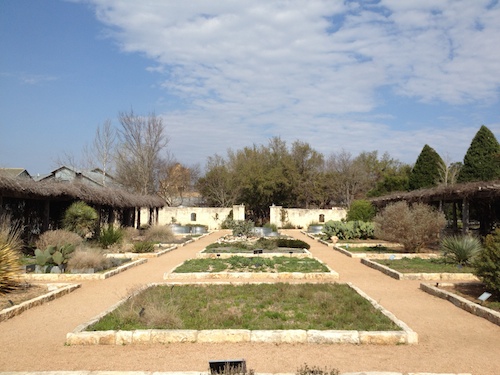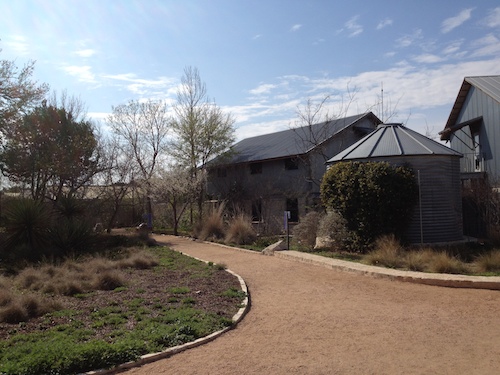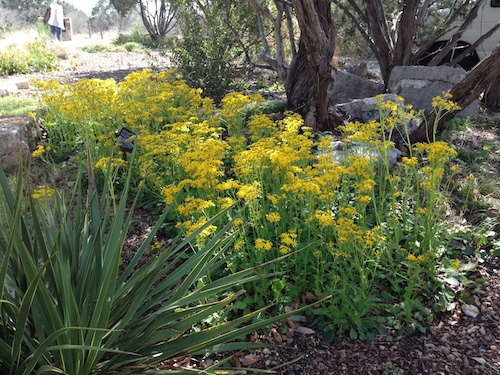
(Image Credit: Jay Voss)
With spring now fully upon us, and the last frost finally out of the way, plants are starting to leaf in the Texas Hill Country. And aside from appreciating the odd dogwood tree early in the new season, this means that it’s time to go out and appreciate Texas’s extensive native wildflower population. There’s nowhere better to do this than at the Lady Bird Johnson Wildflower Center. Located several miles south of town, just off of MoPac, the Lady Bird Johnson Wildflower Center is a great place to spend an afternoon in the sun (especially if Barton Springs is on your way home). I could go on and on with Lonely Planet-like copy about why you and yours should make time for a visit this weekend, but instead I’ll just jump to the chase: the Lady Bird Johnson Wildflower Center is probably one of the most thoughtful public urban landscapes in the Austin metro area. It’s a very, very smart example of landscape architecture, and it ultimately serves a civic purpose.

(Image Credit: Jay Voss)
The center was founded in 1982 by Lady Bird Johnson and Helen Hayes (the actress – A Farewell to Arms, Airport) in an effort to preserve regional plants and landscapes. In 2006 the center was subsumed into the University of Texas at Austin, and I think it’s currently run by the School of Architecture. According to the center’s webpage, for decades Mrs. Johnson had been worrying that regional plants and landscapes were disappearing, and the center was established to keep these endangered species of plants alive in the region. Thus, near the entrance to the center is a perminant garden featuring local plants and fauna. This portion can be seen in the photograph at the top of this post. Each square is organized into various categories (e.g., “Hill Country kitchen plants,” etc.). The order of this grid-like garden is reminiscent of French landscape design, and in spite of this (or, perhaps, because of it) the grid’s focus on native fauna produces a healthy and stimulating dissonance.

(Image Credit: Jay Voss)
Much of the rest of the center is taken up with trails through various Hill Country landscapes. Visitors can walk these paths and explore all the various native Hill Country plants. What’s surprising about all this, especially to a foreign Midwestern such as myself, is the variety of plants that are local to this region. On a recent visit I found myself searching for blooming wildflowers (it was just a tad early in the season for that), and in their stead I found a surprising plethora of plants and trees that I had no idea existed in this region. The true strength of the Lady Bird Johnson Wildflower Center, I think, is that it organizes all this information into an interactive landscape garden that requires comfy Austinites to get of their cars and learn about plants in the sun. I really can’t imagine a more enlightening civic gesture to get a select group of citizens thinking of their natural environment, especially when that environment is surprisingly rich and beautiful. It might not be Yellowstone, but that doesn’t mean it’s any less complex.
Recent comments
2 years 29 weeks ago
2 years 44 weeks ago
2 years 44 weeks ago
2 years 50 weeks ago
3 years 4 weeks ago
3 years 4 weeks ago
3 years 4 weeks ago
3 years 6 weeks ago
3 years 6 weeks ago
3 years 6 weeks ago